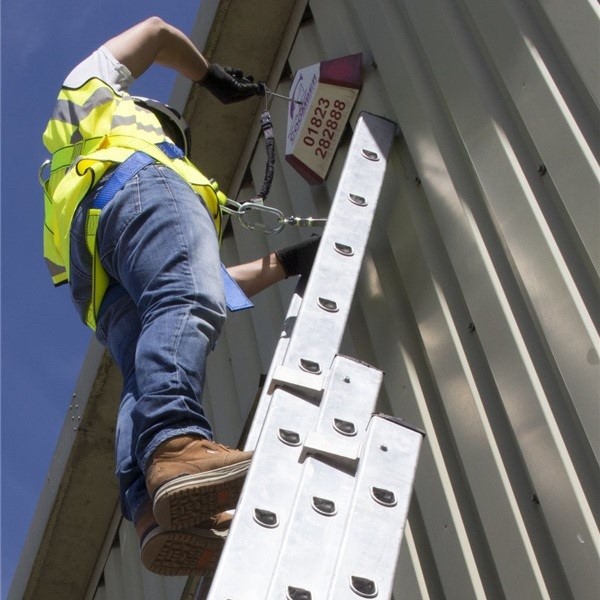
Humans cannot fly, and reliable jetpacks have yet to be invented. This means that working at height requires a fair amount of equipment, which can be broadly split into two categories: access and safety. Read on to find out more.
Working at Height Access Equipment
Simply put, access equipment is equipment that lets you access a high-up work site. Common height access products include:
- Ladders
- MEWPs
- Scaffolding
The most widely-used piece of access equipment is probably a ladder. There are many different types of ladder available, such as step ladders to telescopic ladders.
READ MORE: What Type of Ladder Should I Use for Work?
For work sites located higher than a ladder can reach, you might need to use a Mobile Elevated Work Platform (MEWP) instead. These powered access machines are operated either by a worker on the ground or by the worker on the platform itself. MEWPs can be used to access all kinds of different work sites, such as treetops, the upper windows of tall buildings, and electrical systems on telegraph poles.
Working at height sometimes means working on scaffolding – whether it’s fixed scaffolding or a scaffold tower. Fixed scaffolding is fixed to the structure on which work is being undertaken, whereas scaffold towers are fully mobile, pre-made, stand-alone towers with a maximum height restriction of 12 metres. They can be secured to buildings, but don’t normally do so.
Both fixed and tower scaffolds allow for work at height over long periods, for which ladders and MEWPs may not be suitable.
Working at Height Safety Equipment
Safety is the top priority when working at height. Whether they’re climbing a ladder, using a MEWP, or just walking around on a rooftop, employees must be kept safe while working at height. To help you achieve this, we offer a wide variety of height safety equipment here at SLG.
Our height safety range includes the following products:
- Harnesses
- Lanyards
- Fall arrest blocks
- Head protection
- Rope access equipment
- Climbing accessories
All of this equipment is designed to keep you safe while you’re working at height, but within different contexts. Our rope access equipment, for example, is primarily designed for use by arborists and industrial abseilers – whereas our protective headgear is suitable for anyone who’s working at height.
Depending on how you’re working at height, you might need some fall protection in the form of either a fall arrest or fall restraint system.
READ MORE: What’s the Difference Between Fall Arrest & Fall Restraint?
Working at Height Equipment Inspections
Height safety and access equipment should be inspected regularly to check for faults. Failure to inspect your equipment, or to provide adequate equipment for the task, can lead to injuries as well as legal action.
You should also undertake a thorough risk assessment before work at height commences. This will help you and your workers to select the right equipment for the job.
If you have any questions about working at height, or about the equipment we sell here at SafetyLiftinGear, don’t hesitate to get in touch.
Buy or Hire Height Safety Equipment
Pictured: Level 1 Ladder Safety Fall Protection Kit

